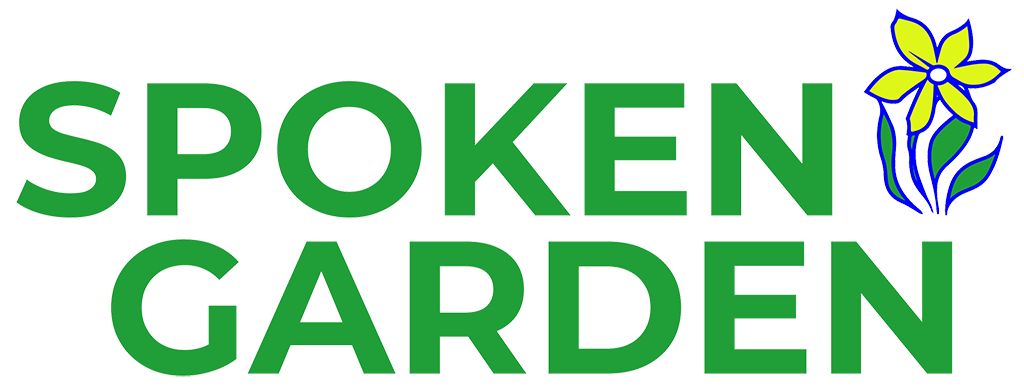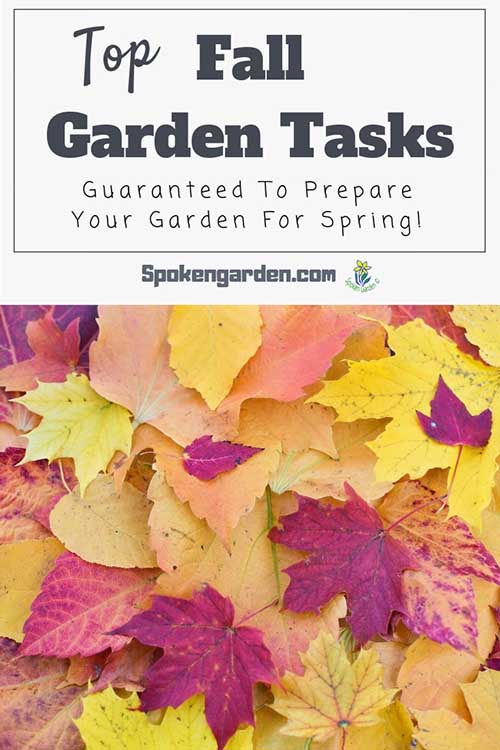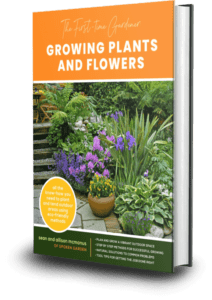Prepare your garden for the upcoming winter and spring months with the most important fall garden tasks!
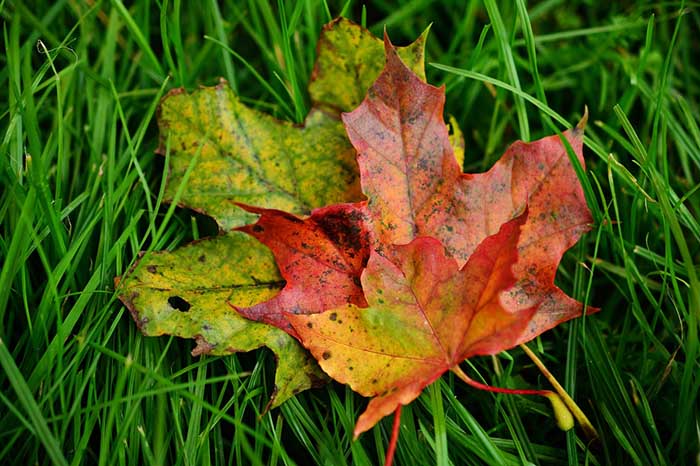
Raking leaves, dividing your perennial plants, mulching your garden beds, the list goes on and on.
Now that it is fall season, you know you need to clean up your yard and prep for winter, but where should you start? Which fall garden tasks are the most important for the health of your garden and will any of these tasks be of benefit for next spring?
Fortunately, we have a list of the top fall garden tasks guaranteed to prepare your garden for spring!
Does the thought of all the fall garden tasks you need to accomplish before winter make you cringe? Luckily, these tasks don’t have to be daunting.
Fall garden tasks can be completed easily and efficiently with our list below. We’ve included tips, advice, and tool recommendations to help you be successful!
Time to get your yard in shape for this fall and winter like a pro!
Read our top fall garden tasks to learn the following:
- How and why to use mulch in your garden beds this fall.
- Proactive strategies to use with your fall weeding chores.
- Efficient tips for picking up fall leaves.
- How to apply the “3 Pillars of Pruning” to your trees and shrubs for better health.
- How best to divide and/or transplant your perennials this fall.
- Fall fertilizing and lawn maintenance tips.
- Proactive equipment maintence techniques.
Sign up for our FREE 7-day Smart Pruning Basics email course.
Learn smart pruning principles and graduate past newbie status in just 7 days. Gain access to this FREE, 7-day email course and Begin Your Pruning Journey TODAY.
Top Fall Garden Tasks Overview
For this post, we’ll highlight the top eight fall garden tasks you should complete this fall season for the best health of your garden. You’ll learn how to put your garden “to bed” for the winter while also preparing for the spring season in advance.
This article is intended for any beginner to the slightly more advanced gardener who would like to learn effective techniques and strategies to help with their fall garden tasks. Additionally, each of the tasks below will be covered in more detail within their own dedicated post AND podcast!
Just to be clear, there are some tasks in our list below that will need to be completed more than once throughout the fall season. For example, leaf clean up. Most seasoned gardeners know that trees and shrubs won’t all drop their leaves at the same time. You will need to repeat this task two, three, or maybe four times or more, as needed.
1) Weeding
In the fall season, different weeds germinate, grow, flower, and go to seed throughout the season. For example, from summer through the fall season, blackberry canes can grow and take over a whole area. Other examples of fall weeds include dandelions, white clover, and crab-grass.
To rid your yard of weeds this fall, you can try two different weeding strategies we use in our garden.
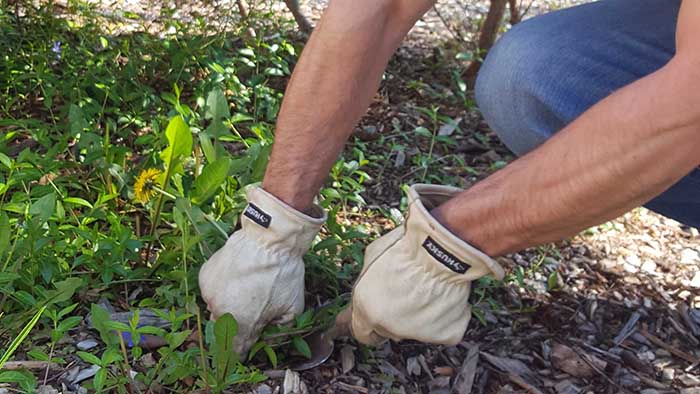
Weeding is one of the top fall garden tasks that doesn’t have to be so daunting!
The first is a proactive strategy used to control weeds, which is different than a “reactive” strategy where you are basically waiting for the weed to make the first move.
A proactive weed control strategy means you need to have a plan in place with the goal of your yard regulating itself and therefore working against weeds a majority of the time. The best proactive weed control strategy balances overall garden and plant health with best maintenance practices to stay ahead of potential weeds in your garden.
Learn more by listening to podcast episode 21 to learn more about two different garden scenarios and how to implement your proactive weed strategy.
The second strategy is weed disruption. This occurs when you weed by cultivating or disturbing the garden soil surface every few days to a week to dislodge or move weeds seedlings or plants around so they don’t get established. This makes it really hard for weeds to root or thrive. You are “disrupting” their growth.
Learn more by listening to our DIY Garden Minute episode 14 and to podcast episode 23 to learn more about weed disruption and how you can add it to your weed strategy.
Recommended Tools:
Recommended Resources:
- Ep. 21: Proactive Weed Control Strategies For Any Season!
- DIY Garden Minute Ep14: Weeding – the Disruption Strategy!
2) Leaf Clean Up

Fall leaf pick-up is one of the most common top fall garden tasks. Did you know leaves are a beneficial additive to your garden beds?
In the fall, the leaves of your deciduous trees and shrubs turn bright yellow, orange, and red before dropping to the ground, piling up, and causing a big mess. They need to be raked into piles and picked up constantly. Or, do they?
Did you know that keeping the leaves in your garden, instead of picking them up, can actually have some great benefits? Dropped leaves can look messy and unhealthy, but fall leaf debris can add nutrients, provide insulation, and keep weeds suppressed.
To clarify, this doesn’t mean that you can avoid this task altogether by keeping all the fallen leaves on the ground. Too many leaves can be a detriment and hurt your garden, though.
The 3 benefits to keeping your plant leaves in your garden are:
- They can act as a kind of mulch layer and help suppress weeds from germinating and growing,
- They can add nutrients to your garden soil as they break down and decompose, and
- They break down into creating more soil and improve water retention.
Listen to podcast episode 23 to learn more about using leaves like a weed suppressant, natural fertilizer, and 3 easy ways to simplify your fall leaf clean up.
Remember, it’s best to only keep about 1-2 inches of leaf thickness in your garden. Beyond the 1-2 inches, you’ll need to rake and dispose of the rest of your fall leaves, unless you want to completely smother all living plants in that area.
Recommended Tools:
Recommended Resources:
- DIY Garden Minute Ep. 11: Fall Leaf Clean Up, Simplified.
- DIY Garden Minute Ep. 12: Fall Leaves and Their 3 Benefits
3) Mulching

Mulching is beneficial to any garden bed and one of the top fall garden tasks you shouldn’t overlook.
The act of mulching can enhance a plant’s health and lengthen its longevity in your garden in so many ways. For this reason, mulching should be a crucial step in your garden maintenance plan.
Mulching should take place in the fall because mulch is any material that is used for covering a garden bed area for the purpose of weed control. In addition to weed control, there are many other reasons why you should mulch your garden beds. This includes soil moisture retention, root protection from heat or cold, encouraging soil microorganisms, improving general soil health, improving soil drainage, reducing soil erosion, enhancing the aesthetics of your garden, providing protection from mechanical equipment, and/or reducing soil compaction.
A quick guide to laying down mulch:
- First, clean up your garden beds of any debris or weeds.
- Next, you need to level your existing soil and possibly water it down.
- Third, lay down your mulch and spread it around so it is 3-4 inches thick.
Make sure to keep your mulch layer away from the base of trees or shrubs so it doesn’t come into direct contact or bury stem tissue. This can lead to higher moisture levels on the stem which creates a better chance of disease and insect damage.
Examples of mulch material are shredded or chipped wood, bark, rocks, tree leaves, compost, and newspaper pieces among many other things.
Recommended Tools:
- Leaf Rake
: metal or plastic
- Hard Rake
: metal
- Pitch Fork
- Tarp
Recommended Resources:
- How to Mulch: Basic Steps for Mulching Anytime of Year
- DIY Garden Minute Ep. 8: Fall Mulching, Defined
4) Lawn Maintenance
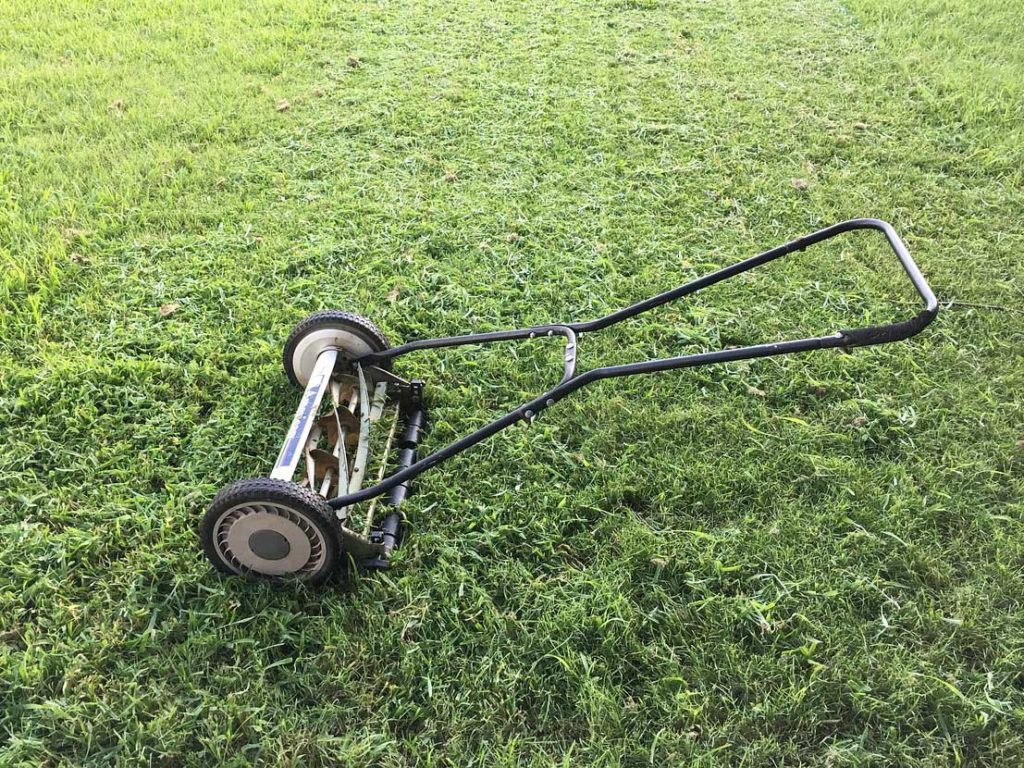
Lawn maintenance should be one of the top fall garden tasks on your list.
Here are some tasks your lawn will need in the fall months to keep it healthy. Also, these tasks will prepare your lawn for the winter and prime it for the next spring.
These tips are based on our Pacific Northwest perspective and experience growing perennial rye-grass mixes in Washington state.
Your lawn tasks for this fall:
- Thatching- Only perform this on lawns 3+ years old and on a frequency of every 2-5 years where needed.
- Aerating- Only perform this task once a year and sometimes up to 4-times a year as needed.
- Top-Dressing with soil- This task can be performed once a year; sometimes more, depending on traffic and use.
- Over-Seeding- Only perform this once a year, unless with heavy use and then twice a year.
- Fertilizing- this task should be performed at least once a year, but most homeowners do this every quarter.
Before you begin any of these tasks, make sure to cut your grass to about 3+ inches (7.62 centimeters). This helps equipment and other materials reach the soil surface. Also, this prevents your grass from not being smothered by adding those materials.
You can also space out these lawn tasks so you only do a couple each year, besides fertilizing and aerating, so it’s not such a big chore each year.
Recommended Tools:
- Thatching Rake
(to de-thatch)
- Manual Aerator
(to aerate)
- Round-Shovel
and Fan-Rake
(to topdress and spread soil)
- Drop Spreader
or Broadcast Spreader
(to overseed and apply fertilizer)
Recommended Resources:
- Podcast Episode 24: Fall Garden Mulching and Lawn Maintenance
- DIY Garden Minute Ep. 16 – Foolproof Fall Fertilizing!
5) Pruning
Pruning is a necessary DIY garden maintenance task that can help improve the aesthetic look of your plants. It is defined as
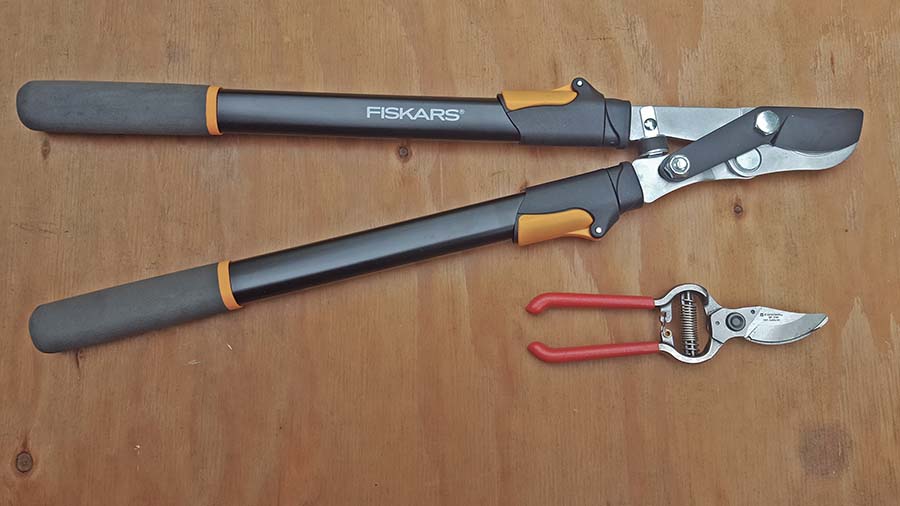
Two examples of pruning tools needed for your top fall garden tasks are loppers and pruning shears.
the act of removing branches, stems, leaves, flowers, and other plant tissues, which is done in order to follow the “3 Pillars of Pruning©.”
The “3 Pillars of Pruning” refer to why you should prune your plants and are as follows:
- Pillar 1: Prune out dead/diseased plant material. Click here to watch this YouTube clip!
- Pillar 2: Prune out any crossing or rubbing branches or stems.
- Pillar 3: Prune to shape or form plants.
Fall is the perfect time to prune (some) of your beautiful plants around your yard. However, not all plants should be pruned this time of year. Pruning in the fall is acceptable if you are trying to remove dead or diseased stems or limbs, remove rubbing or crossing branches, or create better airflow in and around your plant’s canopies.
In general, only Pillar 1 should be followed in the fall.
Recommended Tools:
Recommended Resources:
- Ep. 9: Fall Pruning Do’s and Don’ts
- How to Best Prune Your Garden This Winter
- Best Pruning Shears For Any Gardener! The Must-Have Tool!
- Best Loppers For Your Pruning Needs
[convertkit form=1114562]
6) Dividing, Planting, and Transplanting
Dividing
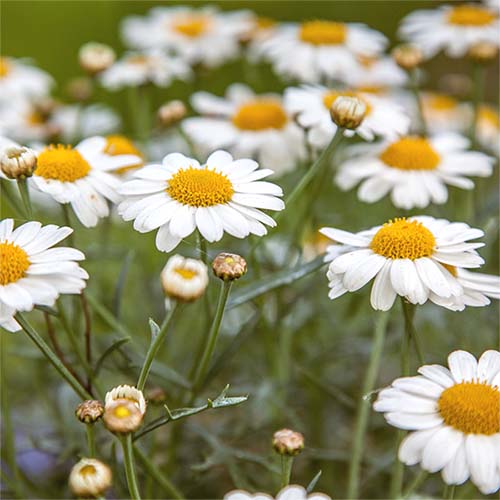
Shasta daisies are an example of a perennial that can be divided and transplanted as one of your top fall garden tasks.
Dividing perennial plants is an important, DIY fall garden maintenance task. There are so many reasons why you may want to consider dividing your plants.
In general, only consider dividing a plant if the plant itself has been healthy and growing in its current garden location for at least two years or longer, as a general rule.
Listen to the DIY Garden Minute ep. 4 to learn more about if you should or shouldn’t divide!
Examples of plants that can be divided in the fall:
- Shasta Daisies
- Hostas
- Asters
- Mint
Planting
Planting in the fall can be a daunting but very rewarding task. By doing this, you are giving your plants the best chance to become established and thrive in your garden in the coming seasons.
Tips to help you make planting easier this fall are:
- Determine the placement of your plants according to their future mature height, mature size, water needs, and light level needs.
- Prepare the soil BEFORE you plant with fresh compost or your favorite manure or fish-emulsion. (this only works best in large planting beds where all the soil is being modified. If just for a single plant, don’t modify the soil when you plant, but after you can add some compost around the top of the soil so it can slowly filter down.
- Dig only as deep as you need so the plant-crown isn’t below the soil line. In fact, if it is just above the soil line, that is ok because over time it will settle anyway. Don’t over-dig your hole depth.
- Dig each hole twice as wide as deep so plant roots can easily get anchored and established.
- Water each hole before AND after planting each plant.
- Put down any fertilizer around the surface of the plant, but DON’T mix it in with the soil.
- Create a soil berm around each plant at the soil surface to optimize water infiltration around roots.
Transplanting
Transplanting your plants this fall generally becomes the next step after a few years of dividing plants or moving plants from one area to another area of your garden, but not all plants should be transplanted. When transplanting, follow the same general steps above for planting. Here are some easy tips to know if you should or shouldn’t transplant:
- Is your plant healthy enough to transplant and move?
- Look at the plant’s leaves and stems: if they don’t have any unusual discoloration or growth on them, they are probably ok to transplant. BUT, if they have areas with no new leaves or entire sections of dead stems and leaves, they need some attention to see what’s the issue.
- Do you have enough space in the new location for a specific plant to grow and mature?
- Think of how large your plant will get and if there is enough room in the new location to grow into in relation to other plants, walkways, or structures around it. If it’s going to overgrow into other plants or into the side of something, then pick a different location to plant it.
- Is the plant about to flower or is it currently flowering?
- If you see flowers almost ready to bloom or in bloom, you should wait for the plant to finish flowering and then transplant it. This lets the plant finish its reproductive cycle and set buds for the next year. If you interrupt this cycle with transplanting, you risk leaf and flower bud development for the next year. This reaction can vary between plant species in general.
And now apply these tips to each plant to see if it makes sense to transplant it or leave it where it is for now!
Recommended Tools:
Recommended Resources:
- DIY Garden Minute Ep. 4: To Divide or Not to Divide, Explained
- DIY Garden Minute Ep. 6: Perennial Planting Tips Demystified
7) Fertilizing

Adding fertilizer to your garden beds and lawn areas is one of the top fall garden tasks to add to your list.
Fertilizing needs to be a part of your garden maintenance plan year-round and you should definitely fertilize in the fall. Even though your plants are starting to drop leaves and begin their dormancy processes, they still need to stay healthy through the cold, winter months. This includes the completion of their seasonal biological processes, their continued root growth, and respiration. Fertilizing can help.
Here are some quick pointers to keep your plants fertilized this fall:
- Use a balanced time-release fertilizer to sprinkle around the base of each of your landscape plants.
- Apply a fall formulated fertilizer for your lawn or turf areas. This is similar to the Osmocote time-release but specifically formulated for lawn and grass areas. It’s higher in phosphorus and potassium than nitrogen, so it will help strengthen your grass for the coming winter without a flush of new growth.
- If you think your trees could use a shot of nutrients, there are fertilizer spikes
you can apply.
There are other, natural alternatives that you can apply as well.
And now get out there and fertilize!
Recommended Tools:
Recommended Resource:
8) Equipment Maintenance
Fall is also a great time to perform some maintenance on your gardening equipment and tools. Whether you use hand tools, like hand shears or loppers, or power equipment, like a lawnmower or backpack blower, fall is the perfect time for equipment cleaning, sharpening, and updating.
Here are three garden tools you need to maintain this fall:
- Lawn Mowers – sharpen blades, change oil, clean or change sparks-plug and air-filter, and tighten bolts, and clean the undercarriage of the mower deck.
- Hand shears or Loppers – sharpen cutting blades, oil or grease bolts, and tighten bolt and nut.
- Backpack blowers – tighten hoses, clean spark-plug, and air filter.
These maintenance tips can be applied to many more tools and equipment than just these three. Also, each tool, like the lawnmower, will be slightly different for bolt positions, oil-pan and spark-plug location, and other pieces, so just be aware of this when maintaining different tools and equipment.
Remember, be sure to follow all safety instructions for each tool and turn off all power equipment before performing any maintenance.
Recommended Tools:
Fall Garden Tasks Conclusion
Hopefully, you are now ready to begin your own fall garden tasks. Using our 8 maintenance tasks above, along with tips and tool suggestions, we hope we’ve armed you with enough knowledge to be successful.
The thought of all those fall garden tasks, such as raking leaves, dividing perennial plants, and mulching your garden beds, doesn’t have to feel as daunting of a task. Your fall garden tasks can be completed easily and efficiently
Now get out there and work your magic. Your spring garden will thank you.
Well, that’s all for now!
Thanks for reading and we hope we inspired you to attack your garden tasks. If you need further assistance, feel free to email us.
For information about garden maintenance, check out either our mulching or our pruning page.
See you in the garden!
~ Sean and Allison
P.S. Find us on YouTube, Pinterest, Twitter, Facebook, and Instagram so you don’t miss a thing!
Spokengarden.com is a participant in the Amazon Services LLC Associates Program, an affiliate advertising program designed to provide a means for sites to earn advertising fees by advertising and linking to Amazon.com
